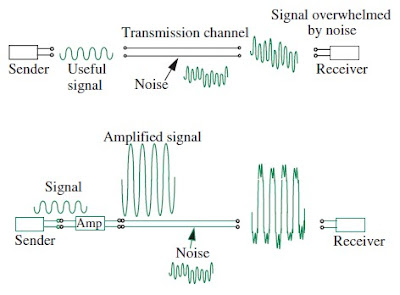- The non-linear relationship between input and output voltage make it difficult to analyze and build circuit using MOSFET amplifier
Thursday, March 31, 2011
8.1 Overview of the Non-Linear MOSFET Amplifier
Chapter 8 The Small-Signal Model
Wednesday, March 30, 2011
7.8 Switch Unified (SU) MOSFET Model
- This section presents a more elaborate model of the MOSFET and can be skipped without loss of continuity.
- For a fixed VGS, we approximated the behavior as a linear resistor using the SR model.
- Clearly, the SR model does not capture MOSFET behavior if we vary VGS.
- Worse yet, even for a given value of VGS, the SR model becomes inaccurate as the value of VDS approaches VGS − VT.
- For more accuracy, we can develop a more elaborate model for the triode region operation of the MOSFET.
- Abandoning the piecewise-linear method, this more elaborate model characterizes the behavior of the MOSFET in the triode region as a nonlinear resistor, whose characteristics depend on VGS.
- When combined with the SCS model for the saturation region, the nonlinear resistor model in the triode region results in a continuous set of MOSFET curves.
- The resulting combined model for the triode and saturation regions is called the switch unified model or the SU model of the MOSFET.
Thursday, March 24, 2011
7.7 Operating Point Selection
- We are often interested in amplifying time-varying signals.
- Because the amplifier turns off for input voltages less than VT, it is important to add an appropriate DC offset voltage to the time-varying input signal so that the amplifier remains in the saturation region for the entire range of input voltage variation.
- This input DC offset voltage defines the operating point of the amplifier.
- The DC offset must be chosen carefully, for if it is too large, the amplifier will be pushed into the triode region, and if it is too low, the amplifier will slide into the cutoff region.
- The input offset voltage is also called the input bias voltage or the input operating voltage
- The corresponding output voltage and the output current define the output operating point of the amplifier.
- Valid range for operating point under the saturation discipline:
Wednesday, March 23, 2011
7.6 Large-Signal Analysis of MOSFET Amplifier
- Two forms of analysis come in handy for amplifiers: a large signal analysis and a small signal analysis
- Large signal analysis deals with how the amplifier behaves for large changes in input voltage. (changes that are of the same magnitude as the operating parameters of the amplifier)
Tuesday, March 22, 2011
7.5 MOSFET Amplifier
Monday, March 21, 2011
Tuesday, March 15, 2011
7.3 Actual MOSFET Characteristics
- SR model of MOSFET is inadequate when VDS >= VGS - VT
- MOSFET characteristics match the SR model for a fixed value of VGS, VGS >= VT and VDS is small (VDS < VGS - VT) :
- IDS begin to saturate when VDS approaches the value of VGS - VT
- Saturation region of MOSFET operation
- SR and SCS (switch current source) model:
Monday, March 14, 2011
7.2 Review of Dependent Sources
- Amplifiers are naturally modeled using dependent sources
- Dependent sources serve to model control of energy or information flow
Thursday, March 10, 2011
CHP 7 MOSFET Amplifier: 7.1 Signal Amplification
- Signal amplification (analog):

- Depending on internal structure, an amplifier can amplify input current, voltage or both
- When V x I product of output exceeds input's, power gain results
- A device must provide power gain to be called an amplifier
- Noise tolerance through amplification:
- Another amplifier application: buffering
Subscribe to:
Comments (Atom)


















